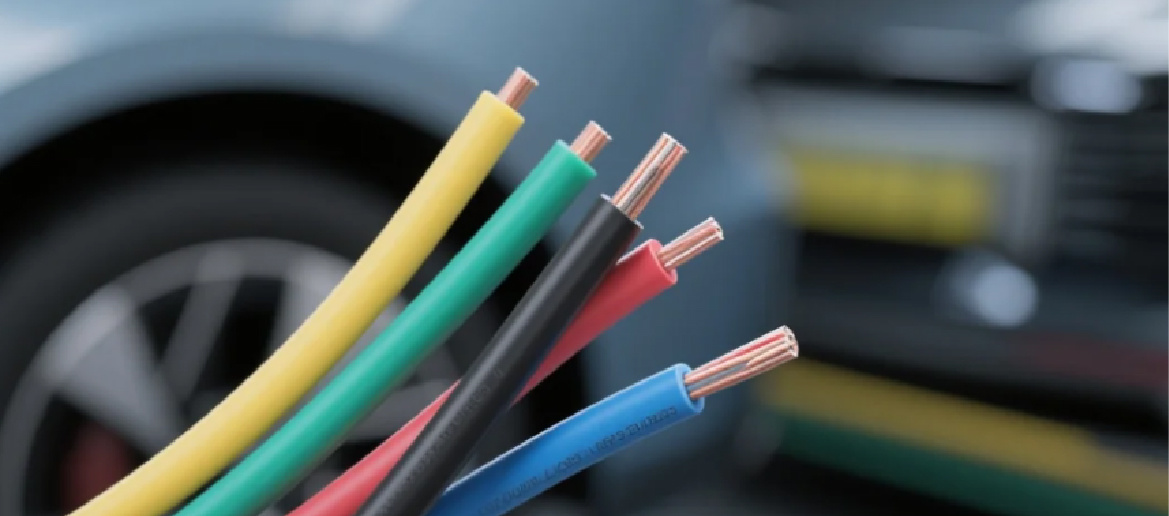Silicone for New Energy High-Voltage Cables: A Core Material Empowering Safety and Efficiency of High-Voltage Systems
2025-10-17
With the rapid development of the new energy industry (new energy vehicles, energy storage, smart grids, etc.), high-voltage systems have become a core component of various devices. As a key insulating and protective material ensuring the stable operation of high-voltage cables, silicone for new energy high-voltage cables directly impacts the safety, reliability, and service life of the entire high-voltage system. It is gradually emerging as an indispensable "invisible guardian" in the new energy industry chain.
I. Core Positioning of Silicone for New Energy High-Voltage Cables: Why Is It Crucial?
The requirements for cable materials in new energy high-voltage systems far exceed those in traditional low-voltage systems. Traditional materials such as PVC and rubber have obvious shortcomings in high-voltage resistance and extreme environment resistance. Silicone, however, with its unique molecular structure, has become the preferred material for high-voltage scenarios. The core reasons can be summarized into three points:
1. Building a Solid Insulation Safety Barrier
The top priority of high-voltage systems is to prevent breakdown and leakage. Silicone boasts excellent insulating properties, which can effectively block the leakage of high-voltage current, avoid safety risks such as fires and equipment damage caused by insulation failure, and provide a fundamental guarantee for high-voltage transmission.
2. Adapting to Complex Operating Environments
New energy equipment often faces extreme environments such as low-temperature cold and high-temperature heat generation; some scenarios also require resistance to external influences like vibration and friction. Silicone can maintain stable elasticity and performance within a wide temperature range, without becoming brittle or melting due to sudden environmental changes, making it suitable for various complex operating conditions.
3. Extending System Service Life
New energy equipment is generally designed for a long service life, which imposes higher requirements on the aging resistance and corrosion resistance of materials. Silicone has outstanding resistance to aging, ozone, and chemical corrosion, enabling it to withstand external environmental erosion for a long time, reduce the frequency of cable maintenance and replacement, and lower the total lifecycle cost of the system.
II. Main Application Scenarios of Silicone for New Energy High-Voltage Cables
From the perspective of end scenarios, silicone for new energy high-voltage cables has been deeply integrated into multiple core fields, with different performance focuses in various scenarios:
1. New Energy Vehicle Sector
It is mainly used in high-voltage power cables (connecting power battery packs to motors and electronic control systems) and charging cables (connecting fast-charging piles to vehicles). In addition to basic requirements for high-voltage resistance and high/low-temperature resistance, this scenario also demands a certain degree of oil resistance (to resist oil contamination in the engine compartment) and tear resistance (to cope with vibration and friction during vehicle operation).
2. Energy Storage System Sector
It is applicable to high-voltage bus cables in energy storage power stations and inter-battery cluster connection cables. Since energy storage systems mostly operate in long-term outdoor or enclosed environments, silicone must additionally meet weather resistance (to withstand sunlight and rain) and flame retardancy (to prevent fire spread) requirements to ensure long-term stable operation of the equipment.
3. Smart Grid and Special Vehicle Sectors
It is also widely used in the insulation layer of high-voltage power transmission and distribution lines, and high-voltage cables of electric buses/heavy trucks. These scenarios have higher requirements for the high-voltage resistance level of silicone, while also needing to balance lightweight needs to reduce the overall load of the equipment.
III. Technological Development Trends of Silicone for New Energy High-Voltage Cables
As the new energy industry moves toward "higher voltage, greater safety, and better environmental protection," the technology of high-voltage cable silicone continues to iterate. In the future, it will mainly show three development directions:
1. Upgrade of High-Voltage Resistance and Low Loss
To adapt to the higher voltage platforms of new energy vehicles and the larger power transmission needs of energy storage systems, silicone materials will further enhance their high-voltage resistance performance while reducing dielectric loss, minimizing energy loss during high-voltage transmission, and improving system operation efficiency.
2. Optimization of Environmental Protection and Sustainability
The industry is gradually phasing out silicone products containing heavy metals and toxic additives. In the future, more environmentally friendly raw materials (such as bio-based silicone and recyclable silicone) will be adopted; at the same time, production processes will be simplified, energy consumption reduced, and carbon emissions cut to align with the "dual carbon" goals.
3. Innovation in Functional Compositeization
Silicone with a single performance can no longer meet the needs of complex scenarios. In the future, composite functional silicones such as "insulation + thermal conductivity" and "insulation + shielding" will emerge. For example, adding thermal conductive components to energy storage cable silicone to assist heat dissipation, or adding special fillers to form a shielding layer to reduce partial discharge problems caused by concentrated high-voltage electric fields.
IV. Conclusion
Although silicone for new energy high-voltage cables is a "niche material" in the industry chain, it is a "key link" supporting the safe operation of new energy high-voltage systems. As new energy vehicles upgrade to higher voltage platforms and the energy storage industry develops toward large-scale expansion, market requirements for the performance of high-voltage cable silicone will continue to rise, and its technological innovation will in turn promote the new energy industry to move in a safer and more efficient direction. In the future, silicone for new energy high-voltage cables with high weather resistance, low loss, and multi-functionality will become one of the core competition tracks for enterprises.
If you are interested in our products or have the intention to purchase, please contact Mr. Lan, the e-commerce manager, mobile phone and WeChat number 18098293536

The next one:
Recommend News

